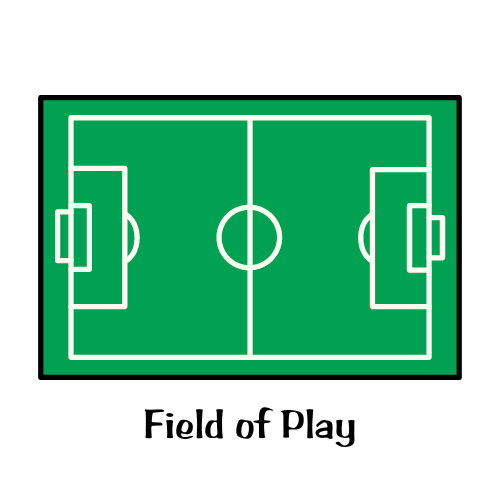Rules of Soccer: A Beginner's Guide for Kids and Parents
Soccer is one of the most popular sports worldwide, and it’s important to know the rules of soccer to fully enjoy the game. Whether you're a parent new to soccer or a young player eager to learn, understanding the rules of soccer is key. In this guide, we’ll have the soccer rules explained in a simple way for beginners.
14 Essential Rules of Soccer Every Player and Parent Should Know
1. The Field of Play
- Understanding the layout of the field is one of the first steps to learning soccer. Every soccer field, regardless of size, shares essential features like the penalty box, goal area, and midfield line.

2. The Soccer Ball
- Knowing the correct soccer ball size for each age group is also part of soccer. Sizes 3, 4, and 5 are commonly used, with younger players often using smaller balls to suit their skill level.
3. Number of Players
- A standard soccer game has 11 players per team, including the goalkeeper. However, for younger kids, smaller teams like 7v7 or 5v5 are more common. This is one of the basics for youth leagues to ensure a fun and manageable game.
4. The Duration of the Game
- For professional games, the match lasts 90 minutes, divided into two halves. But in youth soccer, the game times are shorter based on the players’ age. This is an important point when learning the game.
5. Kickoff
- The game starts with a kickoff from the center of the field. The team that wins the coin toss gets to choose whether to kick off or decide which goal to defend.
6. Scoring a Goal
- A goal is scored when the ball completely crosses the goal line between the goalposts and under the crossbar. The team with the most goals wins, which is the primary objective when learning the basic soccer rules.

7. Fouls and Free Kicks
- When a player commits a foul (such as tripping or pushing), the opposing team is awarded a free kick. More serious fouls inside the penalty box result in a penalty kick. Having soccer rules explained helps new players avoid making these mistakes.
8. Offside Rule
- The offside rule is one of the most confusing soccer rules for beginners. A player is offside if they are closer to the opponent’s goal than both the ball and the second-last opponent when the ball is passed to them.
9. Throw-ins
- When the ball goes out of bounds on the side lines, the other team gets a throw-in. The ball must be thrown from behind the head with both feet on the ground, which is a simple but essential part of the basic soccer rules.
10. Goal Kicks and Corner Kicks
- If the defending team touches the ball last and it goes over the goal line (not into the goal), the attacking team gets a corner kick. If the attacking team last touches it, the defending team gets a goal kick.

11. Yellow and Red Cards
- A yellow card is a warning, while a red card means a player must leave the game. Understanding how referees use these cards is a critical part of the soccer rules explained for both players and spectators.
12. Substitutions
- During a soccer match, teams are allowed to make a limited number of substitutions. In most youth leagues, this number can vary but typically allows more flexibility compared to professional games, where three to five substitutions are allowed. Substitutions happen during a stoppage in play, and the player must exit the field before the new player can enter.
13. Handball Rule
- A player (except the goalkeeper within their penalty area) cannot deliberately touch the ball with their hand or arm. If this happens, the opposing team is awarded a free kick or penalty, depending on where the handball occurred. Accidental handballs, especially when the arm is close to the body, may not result in a foul. Understanding this rule is vital when learning soccer rules for beginners.
14. Goalkeeper Rules
- The goalkeeper is the only player allowed to use their hands, but only within the penalty box. If the goalie handles the ball outside of this area, it results in a free kick for the other team. Goalkeepers can also hold the ball for up to six seconds before they must release it, adding a tactical element to how they distribute the ball.

Learning the basic soccer rules is essential for players, parents, and fans alike. Whether you're just starting out or supporting your child in youth soccer, having these soccer rules explained clearly will enhance your understanding and enjoyment of the game. From knowing how a match starts with a kickoff to understanding more complex rules like offside, mastering these fundamentals will help you follow the action with confidence. Remember, soccer is more than just a game—it’s about teamwork, strategy, and fun! Keep practicing, stay curious, and enjoy every match, whether you’re on the field or cheering from the sidelines. Visit IFAb (International Football Association Board) for a more comprehensive breakdown. Click Here